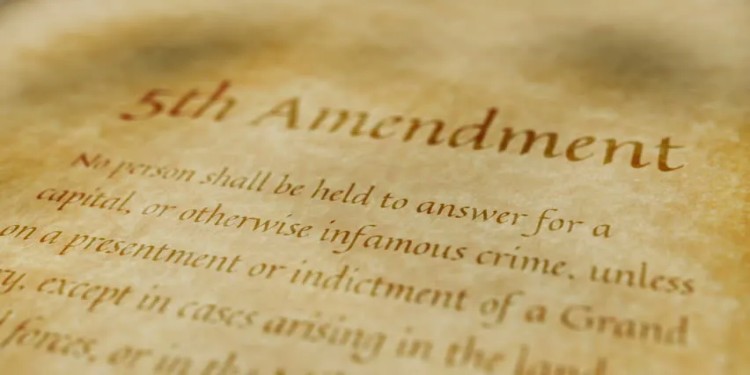In news– Former US president Donald Trump invoked the Fifth Amendment recently.
What is the Fifth Amendment to the US Constitution?
- It establishes a number of rights related to legal proceedings, including that no one “shall be compelled in any criminal case to be a witness against himself”.
- In the most direct sense, that means criminal defendants don’t have to give damning testimony in their own cases. But it has come to apply in non-criminal contexts, too.
- It is a constitutional right that gets high-profile exposure in settings from US Congress to TV crime shows.
- “It reflects many of our fundamental values and most noble aspirations,” the Supreme Court wrote in 1964. The central one, is preventing people from being tortured into confessing or being shoehorned into a “cruel trilemma of self-accusation, perjury or contempt” of court.
- This covers witnesses — not just defendants — in criminal and civil courts and other government settings. The Supreme Court has even held that Fifth Amendment rights protected the jobs of public employees who were fired after refusing to testify in investigations unless they got immunity from prosecution.
- The Fifth Amendment also underpins the famous Miranda warning about the right to remain silent and have an attorney on hand while being questioned in police custody.
- In order to invoke this amendment the witness has to be facing a genuine risk of criminal prosecution. That means prosecution on any charge in any US court.
A breif note on US Constitution-
- The Constitution of the United States is the supreme law of the United States of America.
- It superseded the Articles of Confederation, the nation’s first constitution.
- Originally comprising seven articles, it delineates the national frame of government.
- Its first three articles embody the doctrine of the separation of powers, whereby the federal government is divided into three branches:
- The legislative, consisting of the bicameral Congress (Article I).
- The executive, consisting of the president and subordinate officers (Article II) and
- The judicial, consisting of the Supreme Court and other federal courts (Article III).
- Article IV, Article V, and Article VI embody concepts of federalism, describing the rights and responsibilities of state governments, the states in relationship to the federal government, and the shared process of constitutional amendment.
- Article VII establishes the procedure subsequently used by the 13 States to ratify it.
- It is regarded as the oldest written and codified national constitution in force.
- Since the Constitution came into force in 1789, it has been amended 27 times, including one amendment that repealed a previous one, in order to meet the needs of a nation that has profoundly changed since the 18th century.
Source: The Indian Express














